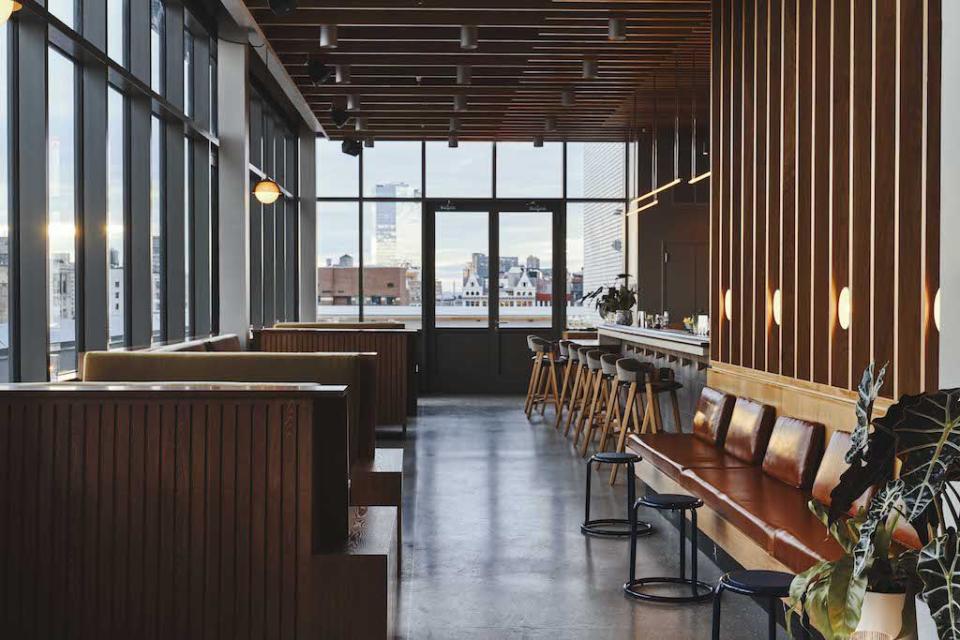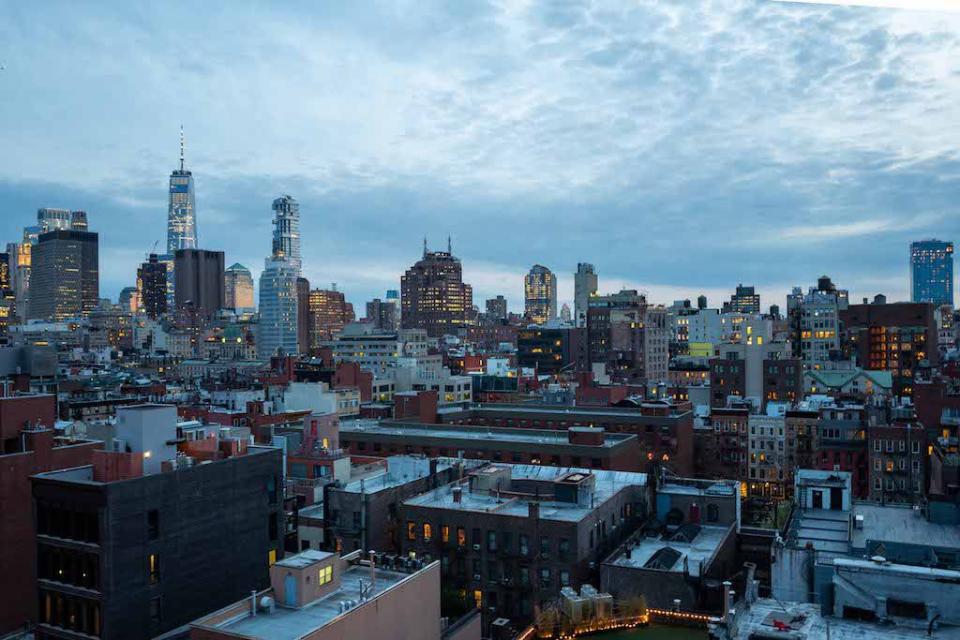Atelier Ace's New New York City Hotel Wants to Help You Clear Your Head

A decade has passed since the first Ace Hotel opened in Seattle, ushering in a hypersocial, relatively affordable, and consciously hip template for a modern hotel. This week, Atelier Ace, the in-house creative studio and operators of Ace Hotel, is debuting Sister City, a quietly elegant and cerebral approach to hospitality. Situated on New York’s Bowery, surrounded by a growing contemporary art scene that includes the New Museum and a smattering of galleries, Sister City comprises 200 warm but streamlined guest rooms (starting at $259); Last Light, a rooftop bar; and Floret, an all-day seasonal eatery. Among the amenities are a 24-hour market in the lobby selling white noise machines and snacks; self-service check-in kiosks; digital interfaces in rooms for making requests; and use of the meditation app Headspace. Throughout, Scandinavian and Japanese design touches abound, such as Noguchi lanterns and cherrywood furniture in the guest rooms. Here, Kelly Sawdon, chief brand officer for Atelier Ace, discusses Sister City’s thoughtful model of a 21st-century hotel.

Where does the name Sister City come from, and why did you choose it for this brand?
Sister cities are twinned places that offer a sense of kinship. In the same vein, we wanted to create a space where you feel a sense of belonging, even if you’ve never been, and a sanctuary within a busy city.
The design inspirations for Sister City range from Finnish saunas to Japanese bento boxes. How did you go about fusing them into your final vision?
We were inspired by the quiet, purposeful, and beautiful design practice endemic to Scandinavian and Japanese traditions because they perfectly illustrate the “less, but better” philosophy at Sister City. Everything has its place, form, and function.
But as a team, we’re human-oriented and curious, and we wanted to see how we could embrace technology, with unexpected moments of surprise and collaboration to express these ideals. Our website is clean and intuitive, but it invites users to personalize their stay by requesting items for their room (extra pillows or a dog bowl, for example). Our multifaceted stained-glass windows let the city light filter through, but in a manner that delights the senses. Our neighbor just down the street, New Museum, curated the books in our lobby library. These elements all serve our vision for a new prototype of hospitality, one that gives to you rather than asks from you, providing guests the freedom and tools within a mindfully designed environment to foster a sense of discovery and selfhood while traveling.
Why is the “less, but better” philosophy so important to you, and how does it permeate every aspect of Sister City?
For us, “less, but better” wasn’t so much an exercise in restraint but a reimagining of compassionate hospitality rooted in design. It was important that every part of Sister City feel sincere as well as aesthetically balanced, and respected each person’s need for comfort, tranquility, and autonomy. We wanted to distill a hotel to its most beautiful working parts and developed a self-service check-in kiosk to reduce the need for unnecessary interaction. We outfitted each room with modular, multifunctional built-in furniture and installed a pantry on every floor where you’ll find useful things like extra towels, a clothes steamer, and a refill station for your water bottle. But we made sure that each decision was executed in the high-test iteration of craft and design-we used warm, Italian cherrywood for our in-room furniture; each Noguchi lamp is hand-numbered and stamped by their team; and we custom-crafted the terrazzo vanities.

This is your first in-house hotel endeavor since Ace Hotel, which has obviously been very successful. What did you want to do differently with Sister City, and what elements from Ace Hotel did you hope to retain?
At the heart of what we do is a love for cities, people, collaboration and taking care of friends. Sister City and Ace Hotel share this ethos, and it’s threaded in all of our projects. But where Ace brings the city in as a platform for others to animate, Sister City acts as a sanctuary from the city, a place to ground you in the present moment and deliver you to the wider world, too.
We have a long history and obsession with music-at Ace, we embrace the analog experience, with live performances, turntables, vinyl, and guitars in rooms, and we’ve always had DJs curate and play sets in our lobbies and public spaces. With Sister City, we wanted to see how sound could be an extension of the design rather than layered on top of it, and we collaborated with Microsoft and Julianna Barwick on an original generative Lobby Score that uses AI to respond to the things that our rooftop sky camera sees throughout the day, like pigeons, passing clouds, the sunset.
Why did you choose this location for your first Sister City, and how is it specifically reflected in the hotel’s design?
Sister City is really at home in a vibrant, busy city. We love our Bowery neighborhood for its dynamic history, spirited atmosphere, and ever-evolving culture. The buildings have rich, past lives and we preserved the facade of the hotel, adding a rooftop bar as tribute to the city itself-the view of the skyline is a testament to New York’s inimitable magic. And Freeman Alley is a calming entry point from the city into the hotel; we planted an urban garden to help facilitate that transition and carried plants into Sister City, too.

The community aspect of your spaces is very important. Can you talk about your design approach to the public areas of Sister City, such as the rooftop and lobby?
We designed our public spaces at Sister City to be an extension of the hotel’s spirit-meticulously designed, detail-oriented, intuitive, and warm. Floret, our ground-floor restaurant, offers an urban garden for warm-weather dining and an all-day menu for travelers, locals, meetings, casual lunches, or big dinners. Last Light, our 11th-floor neighborhood bar, is a world above the heat of the city, with incredible, unobstructed views from our two rooftop decks. These spaces are intended for everyone, and pay the same attention to simple design, balanced nuance and act as a throughway between the interior and exterior world.
('You Might Also Like',)
